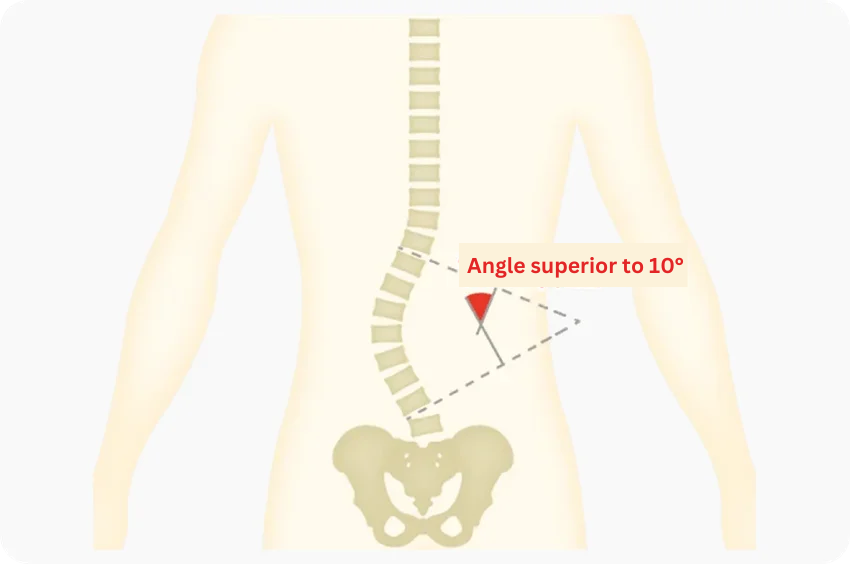October 20, 2025
Degenerative Lumbar Scoliosis (DLS) refers to the curvature of the lumbar spine that appears in middle age or later, even though scoliosis was not present during adolescence. A spine is considered scoliotic when the curvature is 10° or more.
This article explains the recommended sleeping positions for those diagnosed with DLS.
Symptoms and Causes of Degenerative Lumbar Scoliosis
Degenerative lumbar scoliosis is a condition where the spine twists and curves sideways due to age-related factors.

Symptoms of Degenerative Lumbar Scoliosis (DLS)
The early symptom of degenerative lumbar scoliosis is typically lower back pain.
As the condition progresses, patients may experience:
- Pain or numbness in the legs
- Muscle weakness
- Difficulty maintaining posture for extended periods
When the curvature aggravates, the imbalance of the torso can cause the spine to lean, leading to additional strain on the back and muscles, making it difficult to maintain a posture for a long time..
In advanced cases, the curved spine may compress internal organs such as the lungs, heart, stomach, and intestines — potentially resulting in respiratory or digestive problems.
Causes of Degenerative Lumbar Scoliosis (DLS)
The main causes of DLS include disc degeneration and muscle weakness, which stem from factors like aging, poor posture, and lifestyle habits such as smoking.
- Contributing Factors: Poor posture (e.g., slouching, crossing legs) and differences in leg length often contribute to its onset.
- Risk Posed by Osteoporosis: If osteoporosis is present, the bones may struggle to withstand body weight and gravity, tending to worsen the scoliotic curve.
How to Sleep Comfortably with Degenerative Lumbar Scoliosis
When Sleeping on Your Side
If you sleep on your side, lie on the side opposite the curve (the straighter side).
Place a pillow or cushion between your knees to reduce strain and pressure on the spine.
Using a low-rebound (memory foam) pillow helps maintain the natural curve of your neck and aligns the spine more comfortably.

When Sleeping on Your Back
Sleeping on your back helps to avoid uneven pressure on the spine.
Place a pillow under your knees to relieve stress on the lower back.
Avoid pillows that are too soft, as they can cause your head to tilt forward or to the side, putting extra strain on your neck and back.

Sleeping Positions to Avoid
Avoid sleeping on your stomach, as it forces the spine into an unnatural twist and places significant stress on both the neck and lower back.
If you are used to sleeping on your stomach, gradually transition to a side or back-sleeping position to reduce strain on your spine.
Other Important Considerations
Avoid soft mattresses or futons that cause your body to sink; instead, choose a firm, supportive surface.
Perform light stretching before bedtime to relax the muscles and maintain spinal flexibility.
If you experience discomfort upon waking, it may indicate increased spinal imbalance — in that case, consult a specialist for evaluation.
If you have been diagnosed with Degenerative Lumbar Scoliosis or are struggling with back pain, please consider scheduling a consultation at our clinic.



